Madeira, an archipelago of Portugal, has been in my sights as an adventure holiday for many years. Last summer, we brought a fun-loving group of 14 people for a two-week hiking trip to this lush island and had the time of our lives!
Madeira is an autonomous area of Portugal located 545 miles southwest of Lisbon, yet only 360 miles due west of Morocco, Africa, in the north Atlantic Ocean. Madeira and Porto Santo are the only inhabited islands in the archipelago. At 35 miles long and 14 miles wide, Madeira is a small island that packs a walloping punch for scenery and diversity of vegetation. It’s also a renowned hiking mecca for Europeans, while the nearby Azores are better known to Americans.
On our first full day in Madeira, we hiked the southeastern tip of the island on the São Lourenço península. Home to several endemic species, this semi-arid peninsula is virtually treeless, which is somewhat of an anomaly for this island that is revered for its ancient laurel forests. The seemingly barren peninsula’s landscape strikes a beautiful contrast between the reddish hues of the volcanic rock and the sea. Dramatic sea stacks rise from the ocean in vivid contrast to the crystal blue Atlantic waters, providing a mesmerizing visual effect. Our time spent on this pristine peninsula could have only been more perfect if we had spotted one the of majestic sperm whales that frequent this coastline.
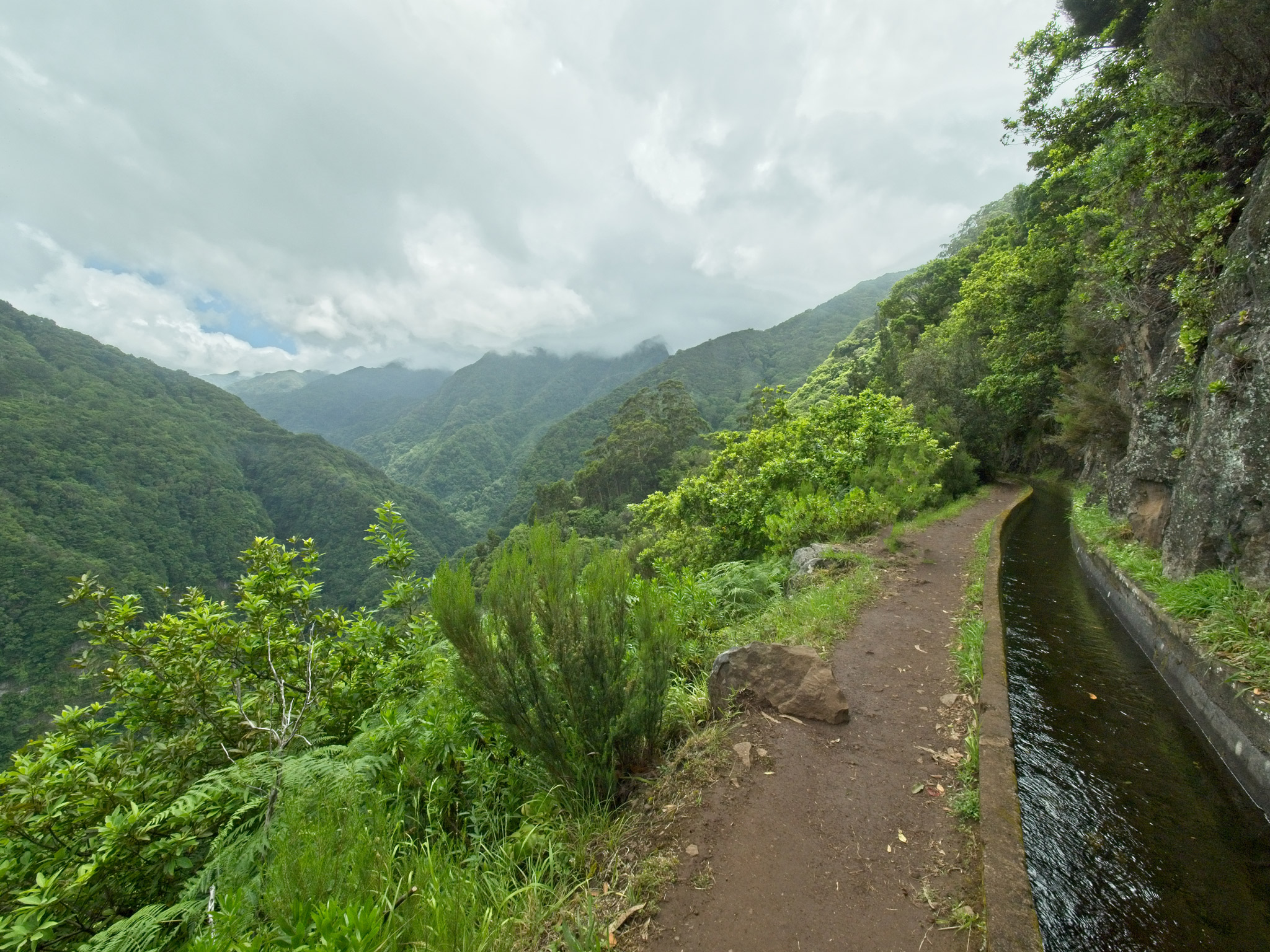
Sun-parched, we left the peninsula for a picnic near Porta da Cruz before taking our second walk for the day atop sea cliffs from Boca do Risco and Larano then south through the countryside and forest before heading back toward our charming hotel by the sea in Machico.
That evening, we found a quiet seaside café, where we sipped the refreshingly light local beer, Coral, and devoured fruits of the sea, including buttered and salted periwinkles and octopus ceviche.
Back at the hotel, we made fast friends with the owner of the inn and joked with her as she served us our locally inspired dinner of black scabbard fish with boiled potatoes that she had spent the afternoon preparing.
To pack in maximum scenery and diversity, I had planned an anti-clockwise trek around the island, which meant moving inns every day or every other day. Our luggage was transported to the next accommodation while we hiked each day.
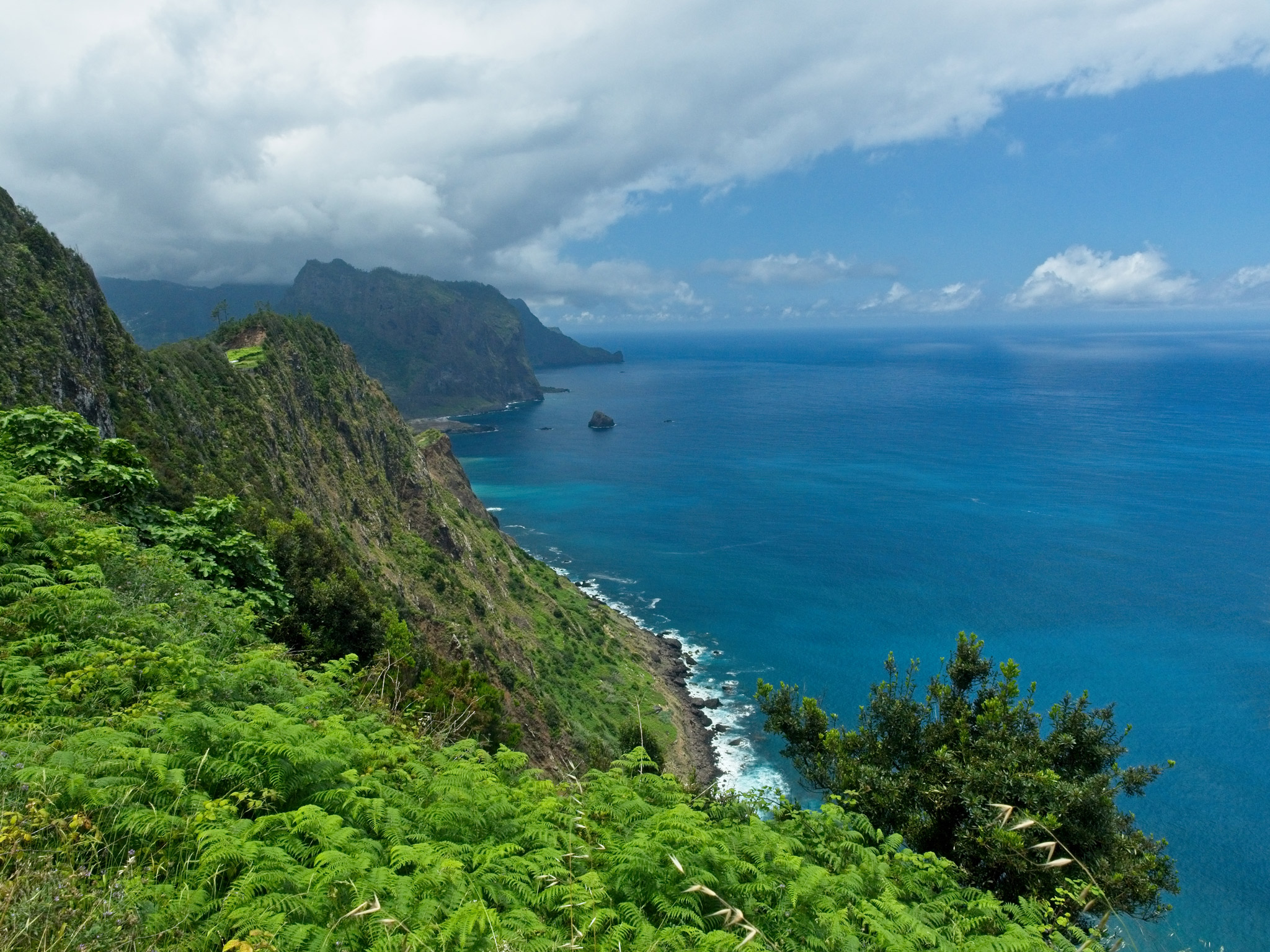

Departing Machico, we headed to the mountains in the interior of the island, where we would spend the next several days exploring. We trekked mountain paths, ascending heights up to 6,100 feet above sea level and traversed the mountains via the footpaths alongside the levadas.
The levadas, in large part, drew me to Madeira. Madeira Island is unique in that residents do not rely on desalination of seawater. Rather, they transport water from the mountains and wet side of the island to the dry side using man-made stone channels called levadas, which date back to the 15th century. Today, there is a network of 200 levadas that encompass approximately 1,864 miles of water channels and 25 miles miles of tunnels. The levadas have footpaths next to them and are the walker’s equivalent to a railroad-grade bicycle path, which makes for a perfect complement to alternate with a grueling day on the mountain paths. The gently sloped paths are often lined with beautiful hydrangeas and agapanthus lilies, tenderly planted by levada workers, or levadeiros.
Having a van and driver at our disposal made it possible to hike point A to point B, rather than out and back or loop routes. I delighted in the freedom of spending all day outdoors in the mountains, hiking 10 miles through the forest and having a ride waiting at the other end! Traveling half board, we took breakfasts and dinners in our inns, but overnighting in such small, remote hotels or guest houses in the mountains meant there were no shops to find lunch provisions for the next day. When possible, our driver would take us by a mini-mart en-route to our next night’s accommodations.
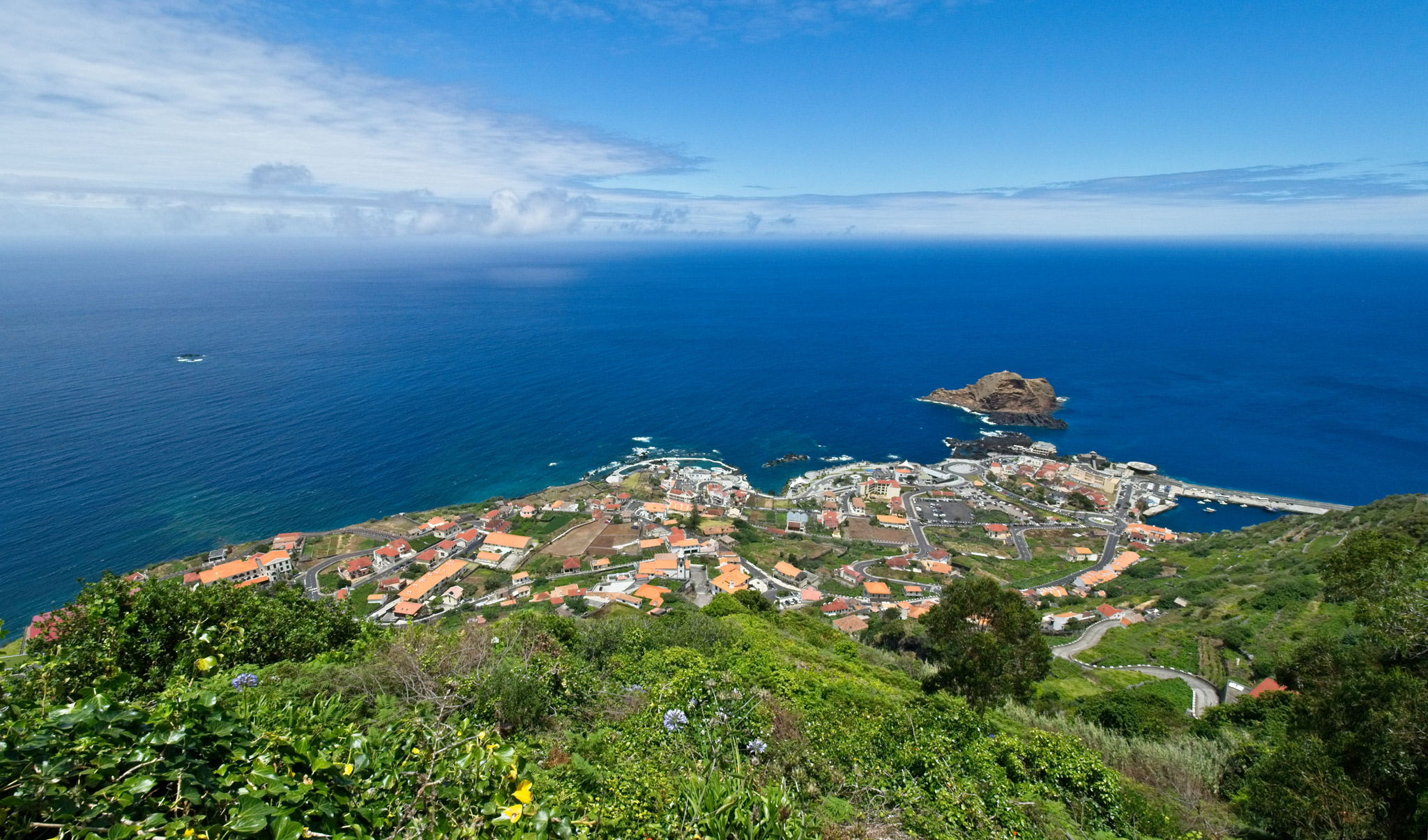

We visited top destinations such as the Balcões mountain viewpoint and Levada do Furado, winding our way through 500-year-old laurel trees, Madeira mahogany and Madeira blueberry, while delighting in the colorful array of flowers such as bird of paradise, Madeira orchids and the spectacular and endemic Pride of Madeira, a conical purple prize to behold.
One day, we hiked 12 miles along a levada that included nine tunnels, one of which was nearly a mile long. The pitch-black tunnel took about 20 minutes to walk. Next, we tackled the trail connecting the island’s two highest peaks, Pico do Arieiro and Pico Ruivo, at 6,100 feet. This stunning walk included rocky terrain, steep ascents and descents, and offered breathtaking views of the Central Mountain Massif.
That night, we slumbered in the mountain abode of an elderly woman named Maria who, along with her dutiful nephew, hosted our group that filled her home. We were warmly welcomed and felt at home as we sipped wine in the back garden overlooking the valley and coastline beyond. Maria pulled off a delicious home-cooked meal of baked chicken, typical Portuguese boiled potatoes, salad and homemade bread accompanied by local wines. Perhaps it was the beautiful setting combined with the joy of sharing this experience with friends, but there was something magical about the meal Maria served.
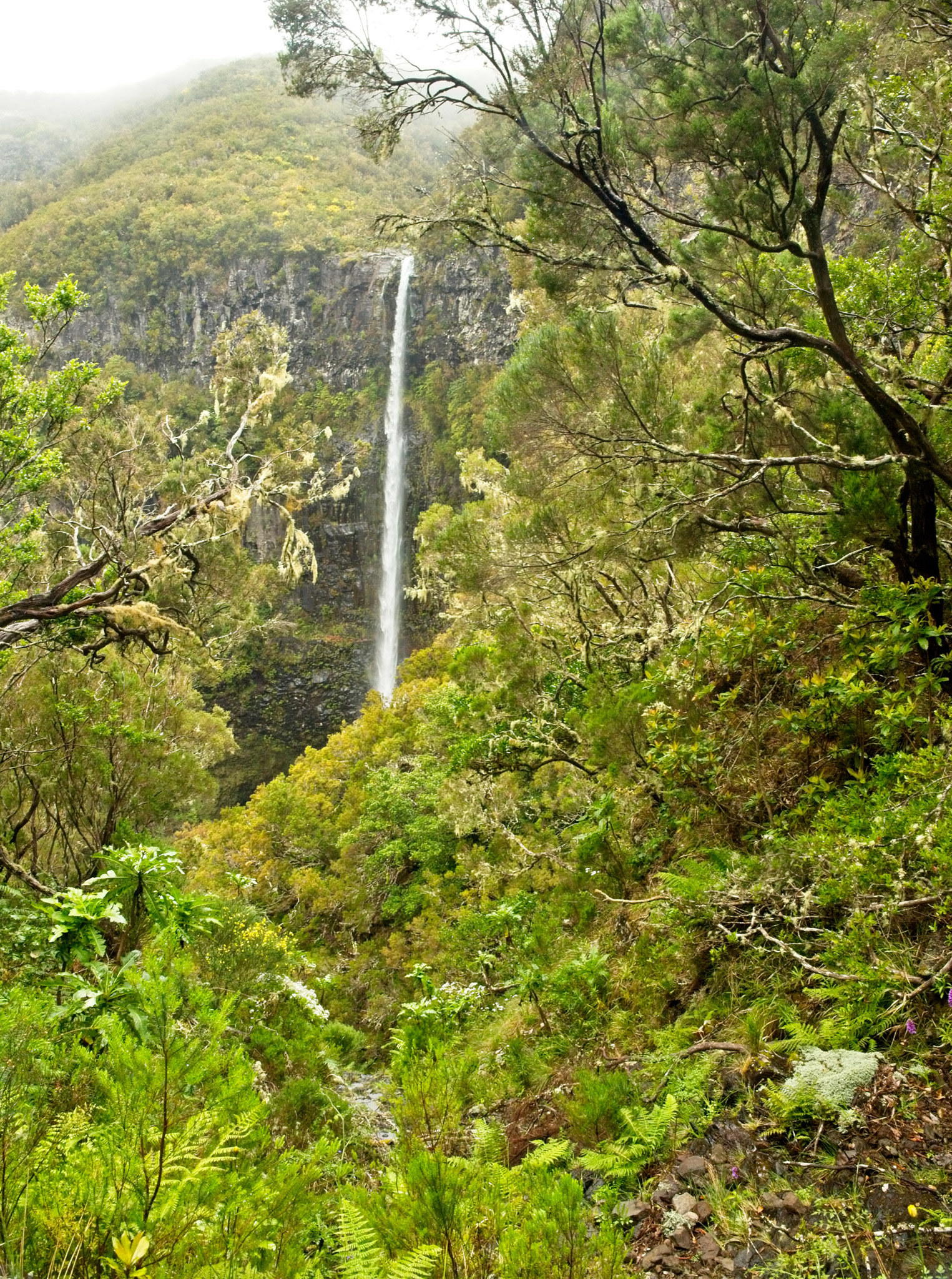

The next morning, we set out for a seven-hour hike in the mountains, again summiting Pico Ruivo to catch glimpses of the mountain tops from above the clouds before making our way to the mountain pass of Encumeada, where we found our next two nights’ accommodations.
Capitalizing on our legs being rested, we set out the next morning to cross the island from north to south starting at Boaventura and ending in the parish of Curral das Freiras. The primitive trail follows an ancient path used by residents to traverse the island and is little known to tourists. The day involved bushwhacking through the forest and scaling downed trees. We had the entire trail to ourselves, and you couldn’t wipe the smile off my face.
Our final hike was along Levada do Norte toward Cabo Girão. We passed homes and gardens bejeweled with flowers, cultivation terraces along the hillsides and charming neighborhoods. Alas, we arrived at Cabo Girão to greet the masses that had come to admire the highest sea cliff in Europe, the second-highest in the world at nearly 2,000 feet above the sea. The dizzying view of the sea below and seaside villages was best experienced from the glass platform suspended over the sea.
It was time to try the famed Espetada, or beef cubes on a skewer grilled over a wood fire. We hit the jackpot when our guide and driver took us to Restaurant Viola in the hills above Cabo Girão. This local specialty was both divine and easy on the budget.
Our trip ended in the capital city of Funchal, where we spent two nights before flying back to Lisbon. Funchal is a bustling seaport of over 100,000 residents, and our boutique hotel with rooftop pool deck in the center of old Funchal proved to be the perfect home base to enjoy the city. Madeira, meaning ‘wood’ takes its name from the ancient forests that once covered the entire island, but to most, Madeira is synonymous with fortified Madeira wine.
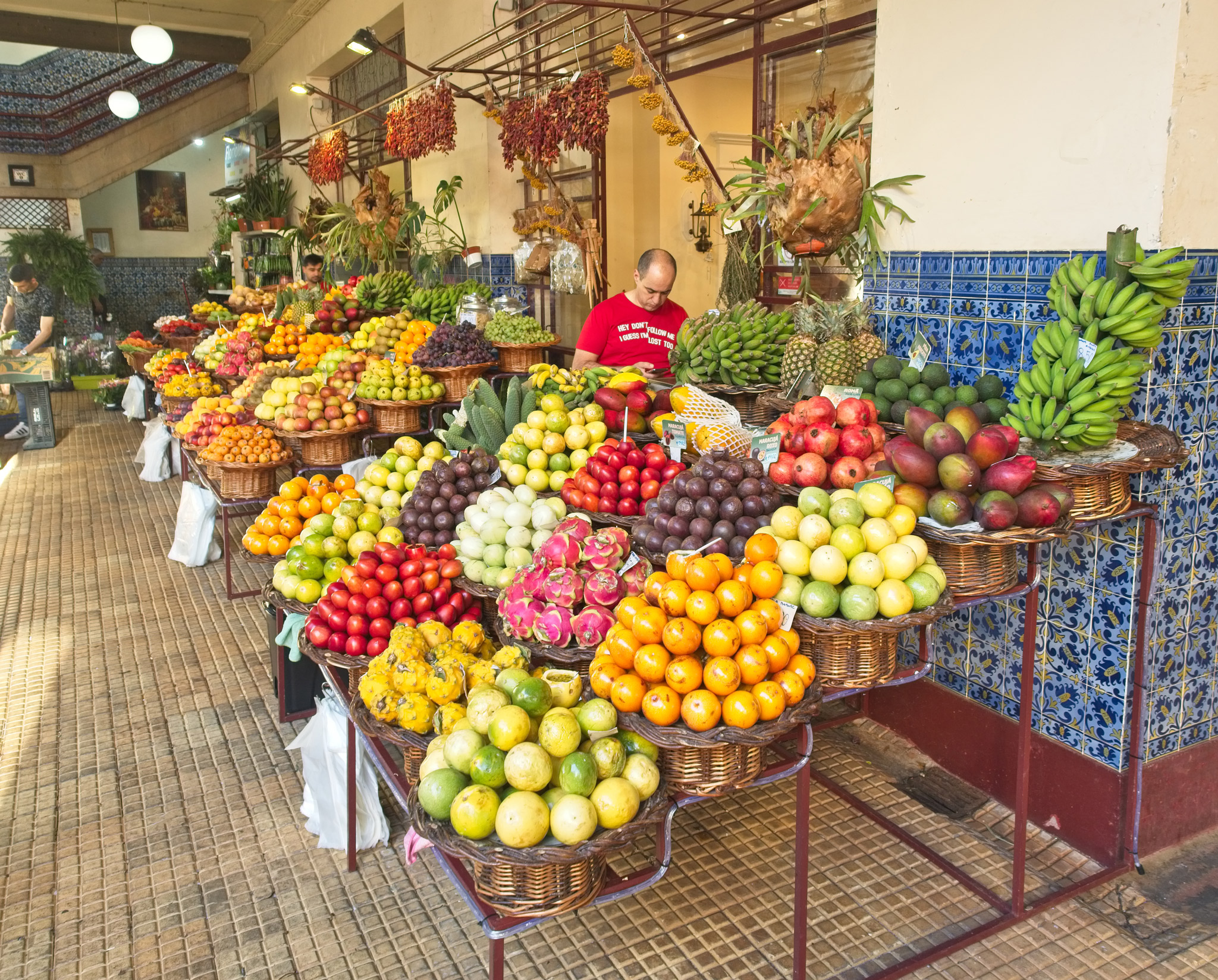

Madeira wine is heated at a high temperature for an extended period to achieve its rich and complex taste. The heating process emulates the effect of the old days when Madeira was nearly cooked in wooden barrels from the heat during the long voyages while being transported in sailing ships crossing the Equator. Blandy’s was the place to sample Madeira, so we set out on foot to taste the 10- and 15-year-old wine.
Walking along the seaside promenade, we later arrived at and boarded the gondola to Monte, a hillside parish located 4 miles from the center of Funchal. From Monte, we rode another cable car for a short descent to the Madeira Botanical Gardens. We spent the afternoon meandering the pathways crisscrossing the hillside where 2,500 exotic plants were on colorful and harmonious display.
I had read enough about Madeira to know how to get from Monte back down to Funchal; we were going to ride the wicker toboggans. The sledges, pushed and steered by local men, originated in the 1850’s as an expedient way for the residents of Monte to travel to Funchal. Today, they provide thousands of tourists per year an exciting experience riding at high speeds down the narrow winding streets to the outskirts of Funchal. We laughed the entirety of the journey and thoroughly enjoyed ourselves despite the overly touristy vibe. Passing the rows of taxis parked at the termination of the toboggan ride, we opted to walk the rest of the way back to Funchal where we reluctantly prepared for our flight to Lisbon the next morning.
We were sorry to have to say goodbye to this idyllic island. The superlative weather offered both warm, sunny days and cool mist in the mountains. The diverse flora was enchanting. We gained an appreciation for the unique laurel forests that slowly release the mountain’s precious rainwater and mist, enabling the water to be captured and transported by the levadas.
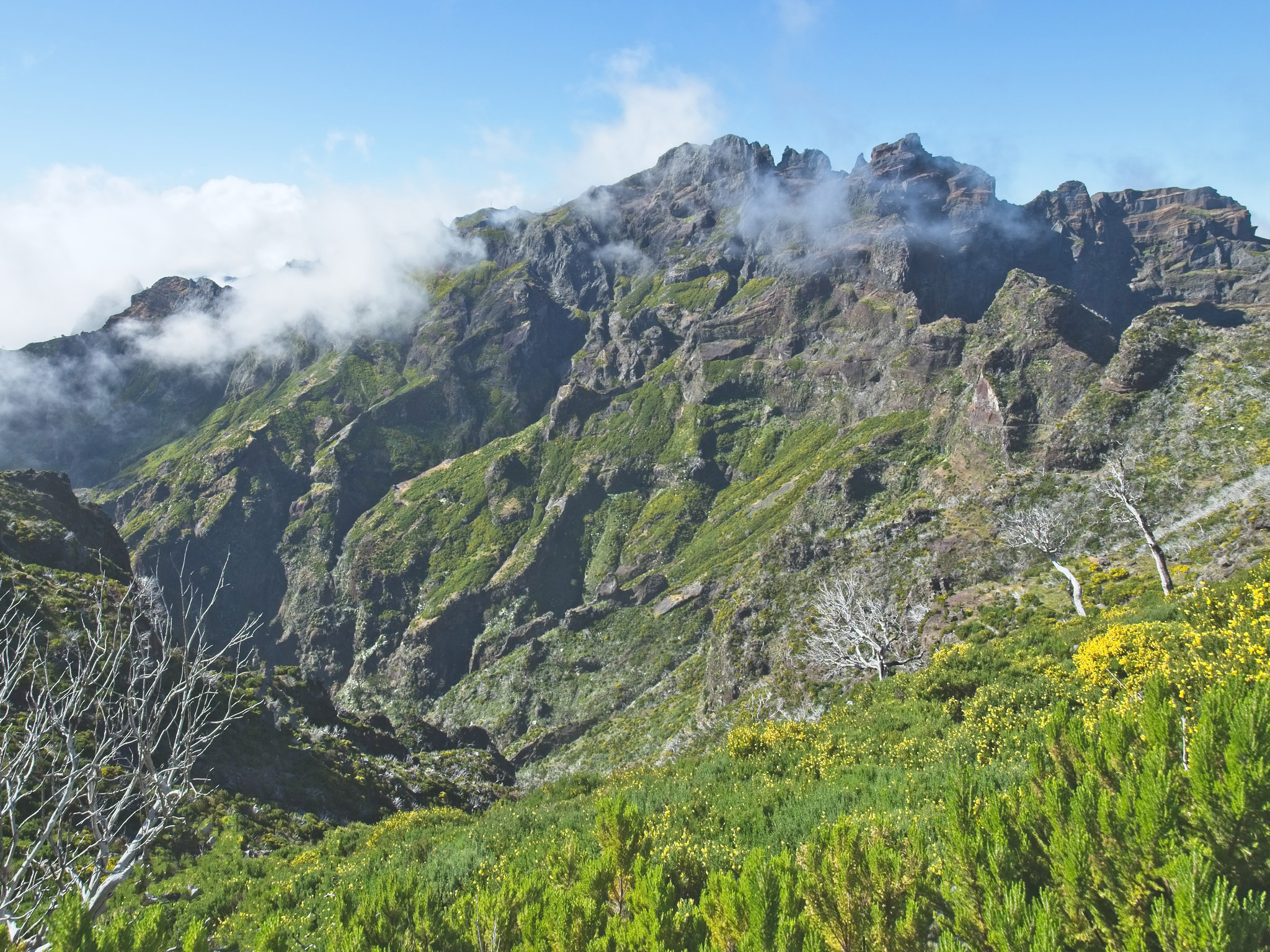

We walked amongst the laurels, lily of the valley, Madeira mahogany and giant heather trees. The vibrant and colorful array of flowers such as hydrangea, Pride of Madeira, agapanthus, and Madeira orchid was extraordinary.
When challenged to pick which walk was my favorite, I couldn’t do it. Each day, our hikes revealed a different forest, new varieties of flowers, varied topography and microclimates, evidence of the island’s volcanic history, and a new levada or tunnel to explore.
We found Madeira to be friendly, safe, beautiful and interesting and look forward to the day we can experience her splendor again.
Cheers. Prost! N
By Denise Lundy
Photography By David Ronalds
As Featured In: 2019 Winter/Spring CDA Edition


